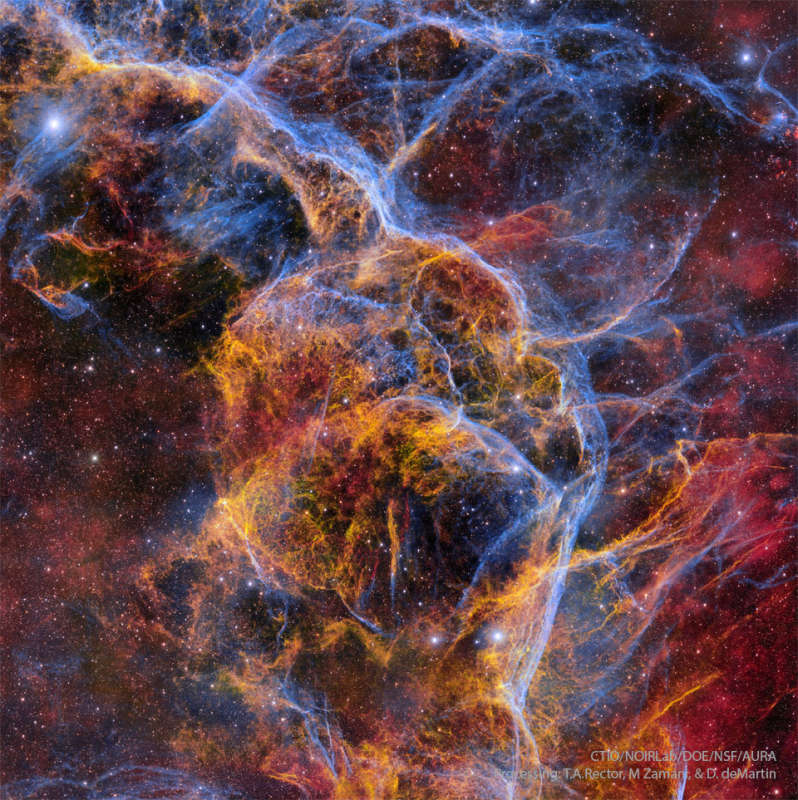
|
Credit & Copyright: CTIO,
NOIRLab,
DOE,
NSF,
AURA;
Processing:
T. A. Rector
(U. Alaska Anchorage),
M. Zamani &
D. de Martin
(Ás
NOIRLab)
Explanation:
The explosion is over, but the consequences continue.
About eleven thousand years ago, a star in the constellation of
Vela could be seen to
explode,
creating a strange point of light briefly visible to
humans living near the beginning of
recorded history.
The outer layers of the star crashed into the
interstellar medium, driving a
shock wave that is still visible today.
The
featured image
captures some of that filamentary and gigantic shock in
visible light.
As gas flies away from the detonated star, it
decays and reacts with the interstellar medium,
producing light in many different colors and energy bands.
Remaining at the center of the
Vela Supernova Remnant is a
pulsar, a star as dense as nuclear matter that
spins around
more than ten times in a single second.
Monday's Eclipse Imagery: Notable Submissions to APOD
|
January February March April May June July August September October November December |
| ||||||||||||||||||||||||||||||||||||||||||||||||
NASA Web Site Statements, Warnings, and Disclaimers
NASA Official: Jay Norris. Specific rights apply.
A service of: LHEA at NASA / GSFC
& Michigan Tech. U.
Based on Astronomy Picture
Of the Day
Publications with keywords: supernova remnant
Publications with words: supernova remnant
See also:
- APOD: 2025 October 1 Á NGC 6960: The Witchs Broom Nebula
- APOD: 2025 June 9 Á Between Scylla and Charybdis: A Double Cosmic Discovery
- Supernova Remnant Cassiopeia A
- APOD: 2025 January 8 Á Supernova Remnants Big and Small
- APOD: 2024 September 18 Á The Mermaid Nebula Supernova Remnant
- APOD: 2024 April 3 Á Unusual Nebula Pa 30
- APOD: 2024 March 25 Á Sonified: The Jellyfish Nebula Supernova Remnant
